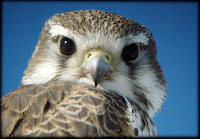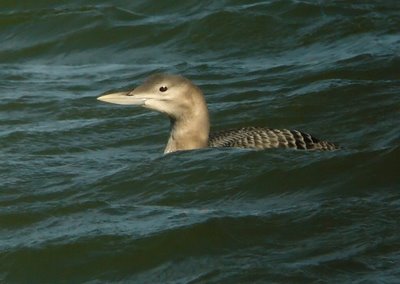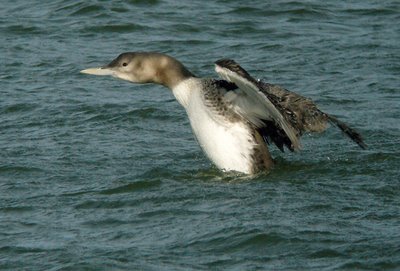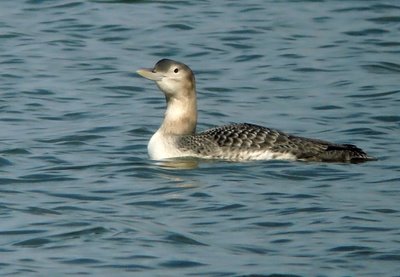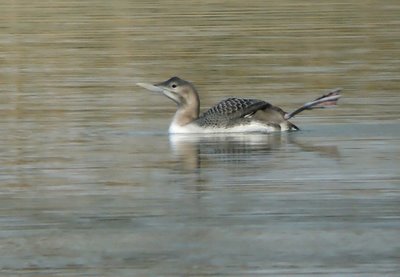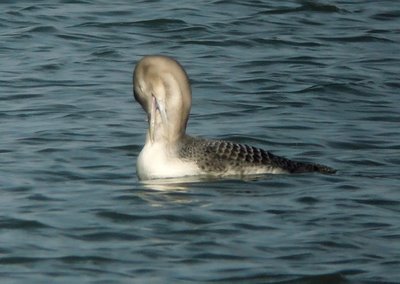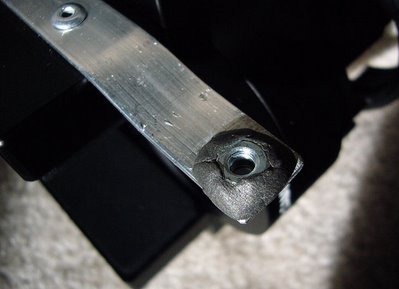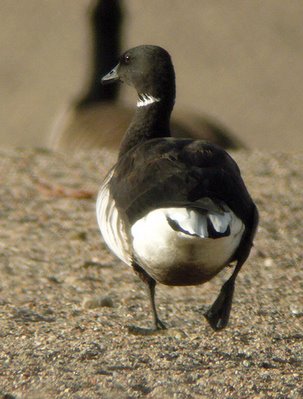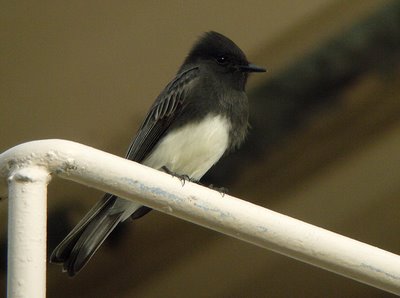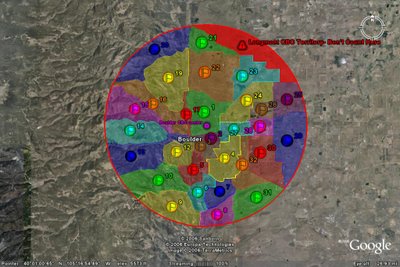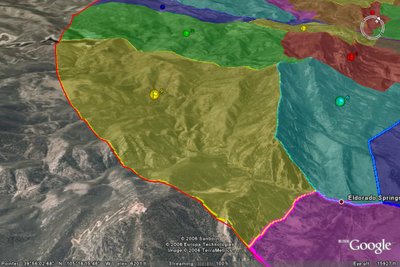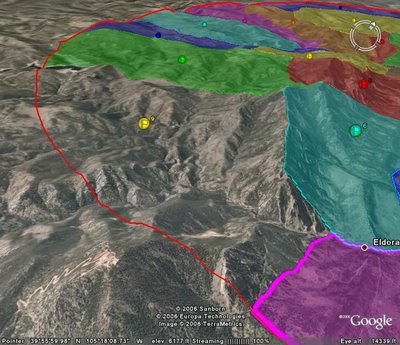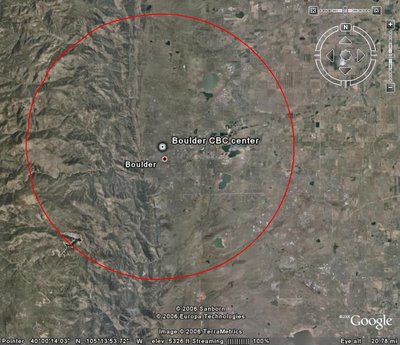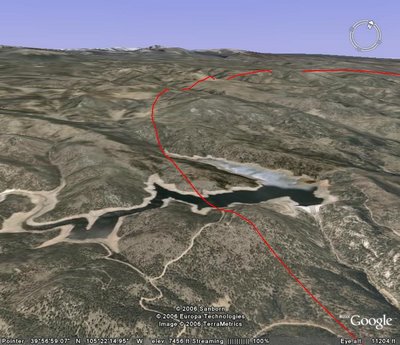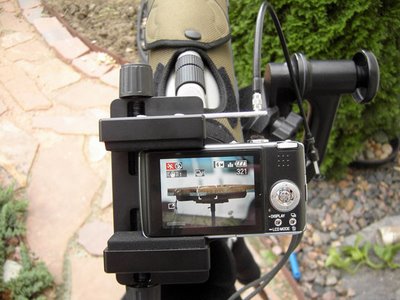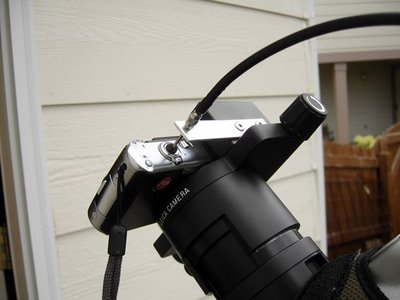As if the Yellow-billed Loon wasn't enough, another species new to the Boulder County list arrived last week. Ted & Hannah Floyd were walking around McIntosh Lake in Longmont on November 26 when they spied a Brown Pelican hanging out with some late American White Pelicans. Ted had the goodness to call me- I happened to be out walking with my own youngster, Garrett. Well, since I was only seeing Rock Pigeons at my current position, I hustled back home, jumped in the birdmobile, and drove up to McIntosh. Sure enough, on the far shore there was a brown lump amongst roosting gulls and white pelicans. After a while, a head with a long yellow bill emerged from the lump as the Brown Pelican decided to preen a bit instead of just sleeping. I shot some stills and videoscoped the bird from prohibitive range (about 1/2 a mile across the lake) before heading around to the north side where the bird was resting. Of course, right as I was showing up there a Bald Eagle flushed everything off the beach, but on a hunch I set up my scope and camera anyway. Sure enough, Brownie circled the west end of the lake and headed back. I somehow found it in flight and videoscoped it coming in for a landing.
The Brown Pelican is almost certainly the same bird that has been hanging around Northern Colorado this summer and fall- it is a sub-adult that had been spending most of its time in the Loveland area (Larimer County) but has also been seen in Weld and Morgan Counties. Truly a county-lister's delight- a very rare bird that shares the wealth. After a sub-zero low in Longmont last night, though, I suspect the thing will either come to its senses and get out of town or end up as eagle chow.
Lake McIntosh has kind of been a disappointing place every time I visited it until this week- I hadn't seen much besides a few un-noteworthy gulls and waterfowl. Well, that has changed! Bill Kaempfer alerted folks that the place was hopping after he surveyed it for the Rocky Mountain Bird Observatory's Early Winter Waterfowl Count. Seems like the shad have peaked, and there is a daily feeding frenzy of 1000's of gulls and mergansers and a dozen+ Bald Eagles. Plus a small group of Sandhill Cranes has headquartered there for at least a week, giving folks a chance to see a species that otherwise is usually just a flyover bird in the county.
Ever the larid-lover, Tony Luekering worked the gull flock after ticking the BRPE and found a very interesting young gull that has traits consistent with Slaty-backed. Exciting stuff, but the bird has proven difficult to study or photograph well, and its true identity may remain in question. Danged immature gulls! Anyway, even if it doesn't get any more status than a maybe or what-if bird, it was fun going on the chase again. As long as some open water remains this should be a good gull spot- already in addition to the Slaty-backed-thingy Gull there have been a Mew and several Thayer's Gulls spotted amongst the Ringers, Herring, and California Gulls there.
Ear Candy Alert: Latest Podcast Episodes!
6 years ago

